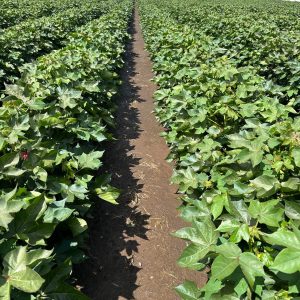
Queensland (QLD) is the agricultural heartland of Australia, boasting a diverse climate, rich soils, and a farming legacy that stretches across generations.
From sugarcane fields in the coastal tropics to cattle stations in the outback, Queensland’s ag sector is both vibrant and complex. But like the rest of the world, it’s in the middle of rapid transformation.
In this post, we explore the current trends, emerging challenges, and promising opportunities shaping farming in Queensland today.
🌾 Current Trends in Queensland Agriculture
1. Diversification of Crops
Queensland is known for its sugarcane, beef, and bananas—but diversification is on the rise. Farmers are increasingly moving toward:
-
Macadamias and avocados, especially in the Wide Bay and Bundaberg regions.
-
Pulse crops, like chickpeas and mung beans, which are gaining popularity due to export demand.
-
Protected cropping (e.g., greenhouses), particularly in peri-urban areas.
This shift not only spreads risk but taps into new domestic and international markets.
2. Digital AgTech Adoption
From drones mapping crop health to IoT sensors monitoring soil moisture, Queensland farmers are turning to precision agriculture. Key technologies include:
-
GPS-guided machinery
-
Remote sensing tools
-
Data analytics for yield forecasting
AgTech adoption is especially strong among younger farmers and enterprises keen on improving efficiency and sustainability.
3. Focus on Sustainability & Regenerative Practices
In the world of farming QLD, there’s increasing momentum behind regenerative agriculture, carbon farming, and eco-certification. More and more Queensland farmers are now:
-
Rotating crops and reducing chemical use
-
Improving soil health through composting and cover crops
-
Participating in carbon credit schemes
This is driven both by environmental concerns and rising consumer demand for sustainable food.
🚧 Key Challenges Facing QLD Farmers
1. Climate Variability
Queensland is no stranger to droughts, floods, and cyclones. In recent years, climate unpredictability has:
-
Disrupted planting and harvesting schedules
-
Impacted water availability for irrigation
-
Created insurance and pricing instability
Farmers are increasingly adopting climate-resilient practices but the volatility remains a huge hurdle.
2. Labour Shortages
A chronic lack of seasonal and skilled labor continues to strain operations. The pandemic exacerbated the issue, but it persists post-COVID. Many farms rely heavily on:
-
Backpackers and international workers
-
Government-sponsored seasonal worker programs
Still, recruitment and retention remain top concerns across the board.
3. Biosecurity Risks
Invasive pests like fall armyworm, and diseases such as lumpy skin disease (in cattle), pose threats to production and trade. Biosecurity is a constant concern, especially with global supply chains and changing climates.
🌱 Opportunities on the Horizon
1. Export Growth to Asia-Pacific Markets
Queensland is well-positioned geographically and economically to feed growing demand in Asia. There’s strong interest in:
-
High-quality beef
-
Fresh produce (mangoes, citrus, avocados)
-
Clean, traceable supply chains
This is a golden opportunity for producers who can meet export standards and scale up sustainably.
2. Carbon Farming and Environmental Markets
With the rise of carbon credit markets and climate-focused policy incentives, QLD farmers can now earn income by sequestering carbon through soil management, tree planting, and other practices. Programs like the Emissions Reduction Fund (ERF) are opening doors for agribusinesses.
3. Regional Agri-Tourism
More farmers are exploring ways to diversify income streams by offering:
-
Farm stays
-
Paddock-to-plate experiences
-
Educational farm tours
As domestic and international travel rebounds, agri-tourism could help bridge gaps caused by seasonal volatility.
The Road Ahead
Queensland farming is resilient, innovative, and deeply rooted in community. While the sector faces undeniable headwinds—from climate change to market shifts—there’s also a world of opportunity waiting for those willing to adapt.
Whether you’re a grower, agribusiness investor, or simply interested in where your food comes from, now’s the time to pay attention to what’s happening in the Sunshine State’s farming sector. The story of Queensland agriculture is one of transformation—and it’s still being written.
